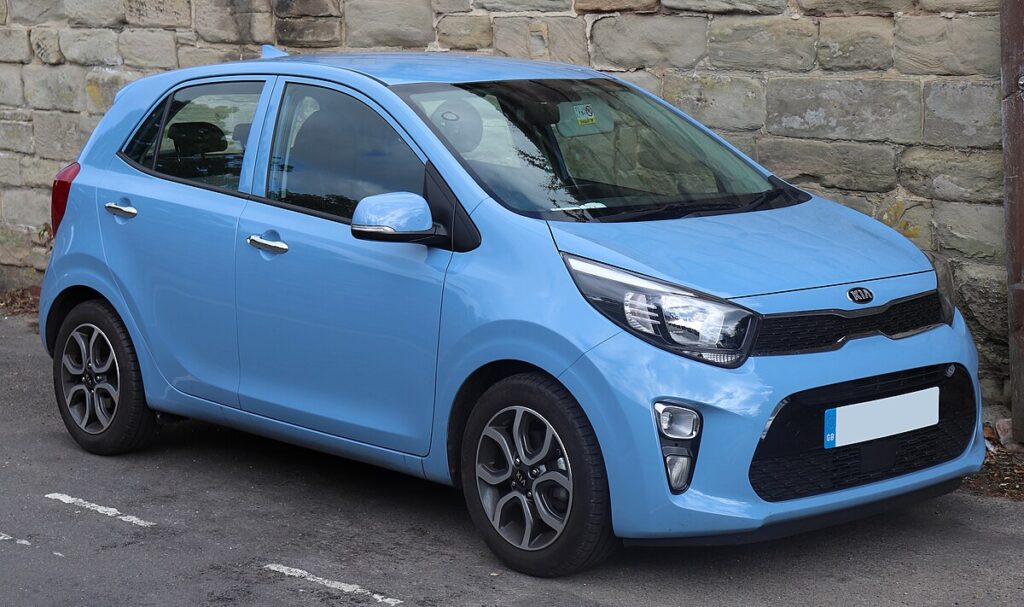
Kia Picanto TPMS Reset: The Complete Guide to Turning Off Your Tire Pressure Light

- Understanding the Kia Picanto TPMS Reset Process
- Why the Kia Picanto TPMS Light Stays On
- Checking Tyre Pressure Before Resetting
- The Three Most Effective TPMS Reset Methods for the Kia Picanto
- Method 1: The Drive Cycle Relearn (Most Effective)
- Method 2: Full Deflate / Reinflate Reset
- Method 3: Battery Disconnect Reset (Advanced Method)
- Additional Kia Picanto TPMS Relearn Tips
- Advanced Troubleshooting for Persistent TPMS Warnings
- Faulty TPMS Sensor
- Incorrect Tyre Size or Aftermarket Wheels
- ECU Communication Problems
- When to Visit a Professional
- Frequently Asked Questions
- Conclusion: The Ultimate Way to Reset the Kia Picanto TPMS
Understanding the Kia Picanto TPMS Reset Process
When the Tire Pressure Monitoring System (TPMS) warning light pops up on the Kia Picanto dashboard, it’s usually your car’s polite way of saying, “Hey, something feels off down here.” Whether it's a dip in temperature, a slow leak, or simply a sensor hiccup, that glowing yellow icon can be annoying—especially when your tyres are already properly inflated.
In this comprehensive guide, we walk you through every reliable method to reset the TPMS on any Kia Picanto generation, from the early models to the modern JA (2017–present) and latest facelift. We cover accurate instructions, in-depth troubleshooting, and practical diagrams so you can turn off the light confidently, safely, and without needing a mechanic.
Why the Kia Picanto TPMS Light Stays On
Before resetting anything, we need to understand the most common triggers:
- Underinflated tyres
- Sudden temperature fluctuations
- Tyre rotation or replacement
- Weak or failing TPMS sensors
- Low sensor battery (typical lifespan: 5–10 years)
- Fault codes after maintenance
The system is highly sensitive. Even a difference of 1–2 PSI can trigger the warning.
Checking Tyre Pressure Before Resetting
A reset only works when tyre pressures are correct. Here’s what we do:
Find Recommended Pressure
- Check the label on the driver’s door jamb
- Or refer to the owner’s manual
- Most Picanto models: 33 PSI (2.3 bar) front and rear
- Some trims and engines vary: always follow the sticker
Use a Quality Tyre Gauge
We always recommend:
- Digital gauge for accuracy
- Check tyres when cold
- Don’t forget the spare tyre if applicable
Correct Each Tyre
Inflate or deflate until they match the manufacturer’s value.
The Three Most Effective TPMS Reset Methods for the Kia Picanto
Below are the proven reset methods, ranked from easiest to most advanced.
Method 1: The Drive Cycle Relearn (Most Effective)
This is the factory-recommended approach.
Steps
- Inflate all four tyres to the recommended PSI.
- Start the engine.
- Drive the vehicle at 50 mph / 80 km/h or higher.
- Maintain this speed consistently for 10–20 minutes.
- The TPMS light should turn off during or after the drive.
Why It Works
Driving activates and synchronises the wheel sensors, allowing the ECU to refresh pressure readings and clear the warning.
If the light stays on:
Drive an additional 10–15 minutes.
If still lit, proceed to Method 2.
Method 2: Full Deflate / Reinflate Reset
This method forces the sensors to register a drastic pressure change.
You may be interested in reading Kia Picanto Daytime Running Light Bulb Replacement
Kia Picanto Daytime Running Light Bulb ReplacementSteps
- Ensure tyres begin at correct pressure.
- Fully deflate each tyre (0 PSI).
- Reinflate each tyre to the exact recommended value.
- Drive for 5–10 minutes to trigger sensor detection.
Best For
- Stubborn TPMS lights
- Cars with recently rotated or replaced tyres
Method 3: Battery Disconnect Reset (Advanced Method)
This manually resets the car’s ECU.
Warning: This may reset other systems like radio presets or window calibration.
Steps
- Turn off the car.
- Open the bonnet and access the battery.
- Use a wrench to remove the negative terminal (-).
- Wait 10–15 minutes.
- Reconnect the terminal securely.
- Start the engine and drive a few minutes to prompt TPMS recalibration.
Works Best For
- System glitches
- Software faults
- Persistent TPMS light after maintenance
Additional Kia Picanto TPMS Relearn Tips
Check for slow leaks
A tyre may lose 1 PSI every few hours from:
- Small punctures
- Damaged valve stems
- Corroded rims
Seasonal pressure changes
Every 5°C drop = ~1 PSI lost.
Cold mornings often trigger false alerts.
After tyre rotation
Some Picanto models don’t auto-recognise wheel position changes.
A workshop relearn tool may be required.
Check the spare tyre
Certain trims include a sensor inside the spare.
Advanced Troubleshooting for Persistent TPMS Warnings
If the warning stays on after all three methods, the issue is deeper. Below are the most common causes and how to diagnose them.
Faulty TPMS Sensor
Sensor batteries are sealed and non-replaceable.
Lifespan: 5 to 10 years.
Signs of failure
- Light flashes for 60–90 seconds before staying solid
- Light appears randomly
- Incorrect pressure readings on a diagnostic tool
Fix
Replace the faulty sensor and reprogram it to the car.
Incorrect Tyre Size or Aftermarket Wheels
Undersized or oversized tyres can disrupt sensor communication.
Always verify:
- Rim size
- Tyre profile
- Tyre width
Against Kia specifications.
You may be interested in reading Kia Picanto Daytime Running Light Bulb Replacement
Kia Picanto Daytime Running Light Bulb Replacement Kia Picanto Clutch Cable Replacement: The Complete DIY Guide We All Wish Existed
Kia Picanto Clutch Cable Replacement: The Complete DIY Guide We All Wish ExistedECU Communication Problems
Rare but possible.
Symptoms may include:
- Multiple warning lights
- Slow sensor updates
- Warning resets but reappears within minutes
Professional diagnostic tools will identify:
- Fault codes
- Sensor ID mismatches
- Weak antenna signals
When to Visit a Professional
Seek workshop support if:
- TPMS light flashes (not solid)
- You recently changed tyres
- A sensor ID needs reprogramming
- You suspect a sensor battery failure
- The light returns repeatedly after resets
A quick test at a tyre centre can instantly confirm sensor health and position.
Frequently Asked Questions
1. Why is my TPMS light still on even after inflating the tyres?
The system may need a relearn cycle, a sensor may be failing, or tyre pressure may still be slightly imbalanced.
2. Can I drive with the TPMS light on?
You can, but it’s unsafe. Underinflated tyres cause poor handling, reduced fuel economy, and increased blowout risk.
3. Do Kia Picanto models need a special tool for TPMS?
Most resets do not require special tools, but sensor relearning or replacement does.
4. How long does a TPMS sensor last in the Picanto?
Typically 5–10 years, depending on driving conditions.
5. Will disconnecting the battery always reset the TPMS?
No. If a sensor is faulty or dead, the light will return.
Conclusion: The Ultimate Way to Reset the Kia Picanto TPMS
The TPMS light on the Kia Picanto is more of a warning than a malfunction—but that doesn’t make it any less annoying. With the methods above, you can:
- Correctly reset the system
- Diagnose deeper issues
- Avoid unnecessary mechanic visits
- Keep your tyres performing safely
For most drivers, the drive cycle reset solves the problem instantly. For tougher cases, the deflate/reinflate and battery disconnect methods provide a complete solution.
You may be interested in reading Kia Picanto Daytime Running Light Bulb Replacement
Kia Picanto Daytime Running Light Bulb Replacement Kia Picanto Clutch Cable Replacement: The Complete DIY Guide We All Wish Existed
Kia Picanto Clutch Cable Replacement: The Complete DIY Guide We All Wish Existed Kia Picanto Battery Replacement: The Complete Owner’s Guide
Kia Picanto Battery Replacement: The Complete Owner’s GuideKeep your pressures consistent, check tyres monthly, and your Picanto will reward you with smoother rides and fewer dashboard surprises.
If you want to know other articles similar to Kia Picanto TPMS Reset: The Complete Guide to Turning Off Your Tire Pressure Light you can visit the category Service and Parts.
Deja una respuesta




More content of your interest